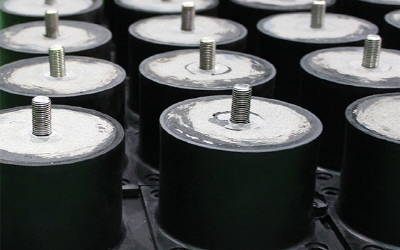
The Principle of Anti Vibration Mountings
Anti vibration mountings minimise the level of vibration transmitted from an oscillatory system to its surroundings. Alternatively the mounts can be used to protect fragile equipment from external vibrations. The amplitude of vibration of the oscillatory system itself does not decrease and must therefore be able to move with the vibration.
Generally mountings should be selected to provide at least 70% isolation, i.e. no more than 30% transmission, against the lowest disturbing frequency of the system. For static applications the maximum recommended strain in the rubber is 15% in compression and 30% in shear. Certain rubber-to-metal bonded mountings can also be used in shock applications to absorb energy, and compression strain levels of up to 30% are acceptable in this type of application.
Vibration Isolation
When there is an external force of energy maintaining the vibration of an oscillatory system, anti vibration mounts incorporating rubber reduce the amplitude of vibration that is passed in to the surrounding structure and the system is said to have a degree of isolation.
Vibration Damping
If the amplitude of vibration of an oscillatory system becomes progressively smaller, the system is said to be damped i.e. there is no external source of energy maintaining the amplitude of vibration and therefore the system ceases to vibrate.




